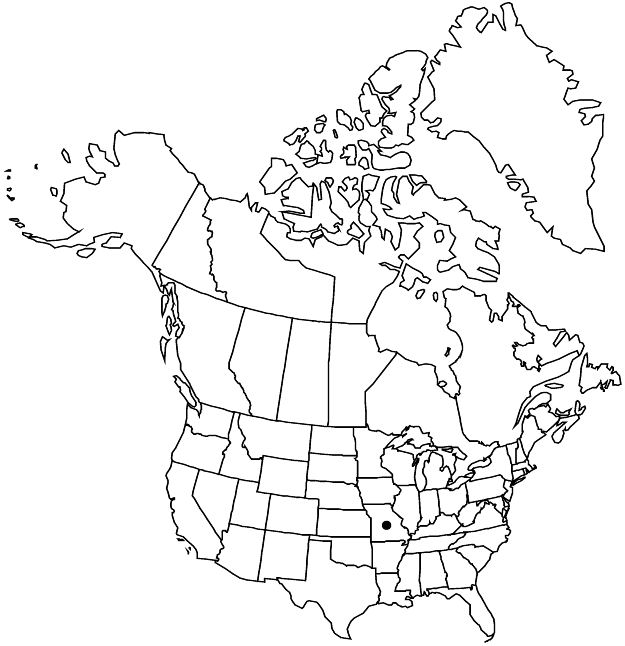Difference between revisions of "Crataegus ×atrorubens"
J. Elisha Mitchell Sci. Soc. 16: 78. 1900. as species
FNA>Volume Importer |
GeoffLevin (talk | contribs) m (Corrected authority to match printed version) |
||
| (7 intermediate revisions by 2 users not shown) | |||
| Line 1: | Line 1: | ||
{{Treatment/ID | {{Treatment/ID | ||
|accepted_name=Crataegus ×atrorubens | |accepted_name=Crataegus ×atrorubens | ||
| − | |accepted_authority= | + | |accepted_authority=Ashe |
|publications={{Treatment/Publication | |publications={{Treatment/Publication | ||
|title=J. Elisha Mitchell Sci. Soc. | |title=J. Elisha Mitchell Sci. Soc. | ||
|place=16: 78. 1900 | |place=16: 78. 1900 | ||
|year=1900 | |year=1900 | ||
| + | |other_info_on_pub=as species | ||
}} | }} | ||
|special_status={{Treatment/ID/Special_status | |special_status={{Treatment/ID/Special_status | ||
| Line 27: | Line 28: | ||
|elevation=200 m | |elevation=200 m | ||
|distribution=Mo. | |distribution=Mo. | ||
| − | |discussion=<p>Crataegus ×atrorubens is probably a hybrid of C. viridis × C. mollis, originating near St. Louis. The C. viridis parentage is apparent in the axillary tufts of hairs on the abaxial leaf surfaces and in the occasional presence of eglandular bracteoles; the C. mollis parentage is apparent in leaf size and shape. This handsome tree is much favored by arboreta; a quite different C. crus-galli hybrid is often misidentified as it.</p> | + | |discussion=<p><i>Crataegus ×atrorubens</i> is probably a hybrid of <i>C. viridis</i> × <i>C. mollis</i>, originating near St. Louis. The <i>C. viridis</i> parentage is apparent in the axillary tufts of hairs on the abaxial leaf surfaces and in the occasional presence of eglandular bracteoles; the <i>C. mollis</i> parentage is apparent in leaf size and shape. This handsome tree is much favored by arboreta; a quite different <i>C. crus-galli</i> hybrid is often misidentified as it.</p> |
|tables= | |tables= | ||
|references= | |references= | ||
| Line 36: | Line 37: | ||
-->{{#Taxon: | -->{{#Taxon: | ||
name=Crataegus ×atrorubens | name=Crataegus ×atrorubens | ||
| − | + | |authority=Ashe | |
| − | |authority= | ||
|rank=species | |rank=species | ||
|parent rank=genus | |parent rank=genus | ||
| Line 51: | Line 51: | ||
|publication year=1900 | |publication year=1900 | ||
|special status=Endemic | |special status=Endemic | ||
| − | |source xml=https:// | + | |source xml=https://bitbucket.org/aafc-mbb/fna-data-curation/src/2e0870ddd59836b60bcf96646a41e87ea5a5943a/coarse_grained_fna_xml/V9/V9_1091.xml |
|subfamily=Rosaceae subfam. Amygdaloideae | |subfamily=Rosaceae subfam. Amygdaloideae | ||
|tribe=Rosaceae tribe Gillenieae | |tribe=Rosaceae tribe Gillenieae | ||
Latest revision as of 13:37, 30 November 2021
Shrubs or trees, 40–60 dm. Stems: twigs: new growth not recorded, 1-year old bright red-brown, older grayish; thorns on twigs not recorded. Leaves: petiole slender, length 30–50% blade, adaxial sulcus pubescent; blade ovate, (3–)4–7 cm, base rounded to very broadly cuneate, lobes 3 or 4 per side, sinuses very shallow to ± deep, max LII 5–20%, lobe apex acute, margins serrulate, venation camptodromous, veins 4 or 5(or 6) per side, apex acute, abaxial surface with axillary hair tufts extending ± on basal part of leaf, adaxial sparsely appressed-hairy young, glabrescent. Inflorescences 6–14-flowered; branches sparsely pubescent; bracteoles usually persistent, linear-spatulate, margins glandular, sometimes caducous, linear, membranous, margins eglandular. Flowers 15–18 mm diam.; hypanthium densely canescent; sepals narrow, margins glandular-serrate; stamens 20, anther color not recorded; styles 4 or 5. Pomes dark red, orbicular, 9–11 mm diam., glabrous; sepals erose or ± reflexed; pyrenes 4 or 5, dorsally grooved, sides plane.
Phenology: Flowering Apr; fruiting Sep–Oct.
Habitat: Riverine flats
Elevation: 200 m
Discussion
Crataegus ×atrorubens is probably a hybrid of C. viridis × C. mollis, originating near St. Louis. The C. viridis parentage is apparent in the axillary tufts of hairs on the abaxial leaf surfaces and in the occasional presence of eglandular bracteoles; the C. mollis parentage is apparent in leaf size and shape. This handsome tree is much favored by arboreta; a quite different C. crus-galli hybrid is often misidentified as it.
Selected References
None.
